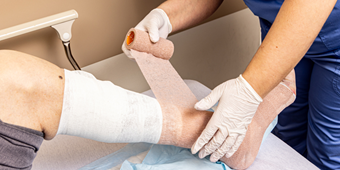- Bladder and Pelvic Health
- Cancer
- Gynecologic Cancer
- Health Topics
- Uniquely Female
- Vaginally Speaking
How To Fight, Treat Cervical Dysplasia And HPV

Find Your Perfect Match
Answer a few questions and we'll provide you with a list of primary care providers that best fit your needs.
Almost 15,000 women are diagnosed with cervical cancer each year – a form of cancer that can be caught early, and often prevented completely.
Annual Pap tests check women for cervical dysplasia, which is an abnormality or a pre-cancer of the cervix. In most cases, cervical dysplasia never evolves into cervical cancer, and if it does become cancerous, it can take up to a decade.
“Cervical dysplasia is on a continuum,” says Dr. Jeremy Crouch. “About 90 percent of cervical dysplasia will resolve itself through a woman’s own immune system.”
Almost all cases of cervical dysplasia are caused by the human papillomavirus (HPV), a sexually transmitted virus that is commonly found in women through a Pap test. Most HPV strains and cervical dysplasia do not have symptoms. HPV has become so common that almost all sexually active men and women will get at least one type of the virus at some point in their lives.
Screening Guidelines
“The guidelines for screenings continue to be refined as we learn more about the role HPV plays in the progression of cervical dysplasia,” says Dr. Crouch.
The Centers for Disease Control and Prevention recommend:
- Cervical cancer screening (Pap test) beginning at age 21. If test results are normal your health care provider may suggest you wait three years until your next Pap test.
- From age 30 to 65, a Pap test as described above, or an HPV test every 5 years (assuming results are normal), or an HPV test along with the Pap test. Follow your provider’s recommendations.
- If you’re older than 65, your health care provider may indicate you no longer need to be screened.
These guidelines do not apply if you have been diagnosed with cervical cancer or cervical pre-cancer. In these instances you should have follow-up testing and cervical cancer screenings as recommended by your health care team.
“It used to be that everyone got a Pap every year, but now in younger women we don’t until they are 21 years of age because the risk is so low of any problems and the chance of a woman’s immune system clearing it up is so high,” Dr. Crouch says.
New research continues to help physicians learn how to determine if you are at risk of developing cervical cancer, how to reduce your risk of getting HPV, and what to do if you are diagnosed with it.
“First and foremost, for young women there are HPV vaccines available that protect against four strains of the virus, in particular two that are associated with cervical cancer,” Dr. Crouch says. “That is the No. 1 thing that women can do to reduce their risk of getting the virus.”
Additionally, you should make your annual gynecologic exams and Pap tests a top priority. The test is the best way to detect cervical dysplasia, which can be carefully watched or treated if found early. Because the majority of HPV cases are taken care of by your own immune system, it is important to maintain a healthy lifestyle.
“Another thing that is really important is smoking cessation,” Dr. Crouch says. “Smoking doubles a woman’s risk of the progression of cervical dysplasia. It doesn’t seem like they would be associated at all, but the nicotine consumed through smoking can concentrate in the cervical mucus, exacerbating or increasing a woman’s risk of cervical dysplasia progressing.”
Find Your Perfect Match
Answer a few questions and we'll provide you with a list of primary care providers that best fit your needs.
Source: American Cancer Society; Jeremy Crouch, MD, Women's Health Specialists and Midwives of Dayton





